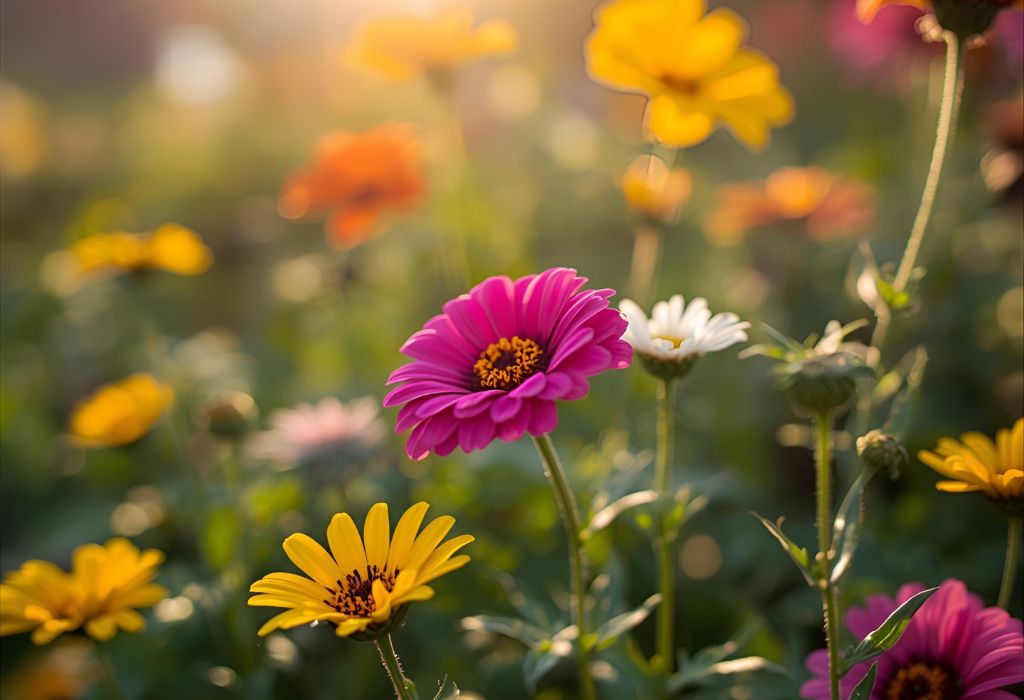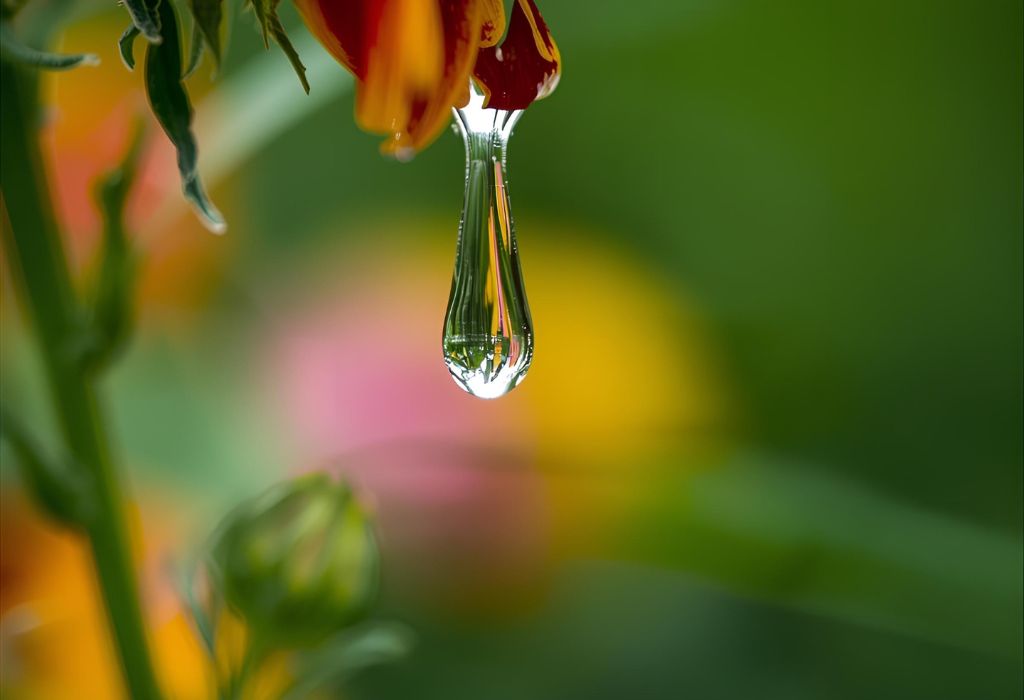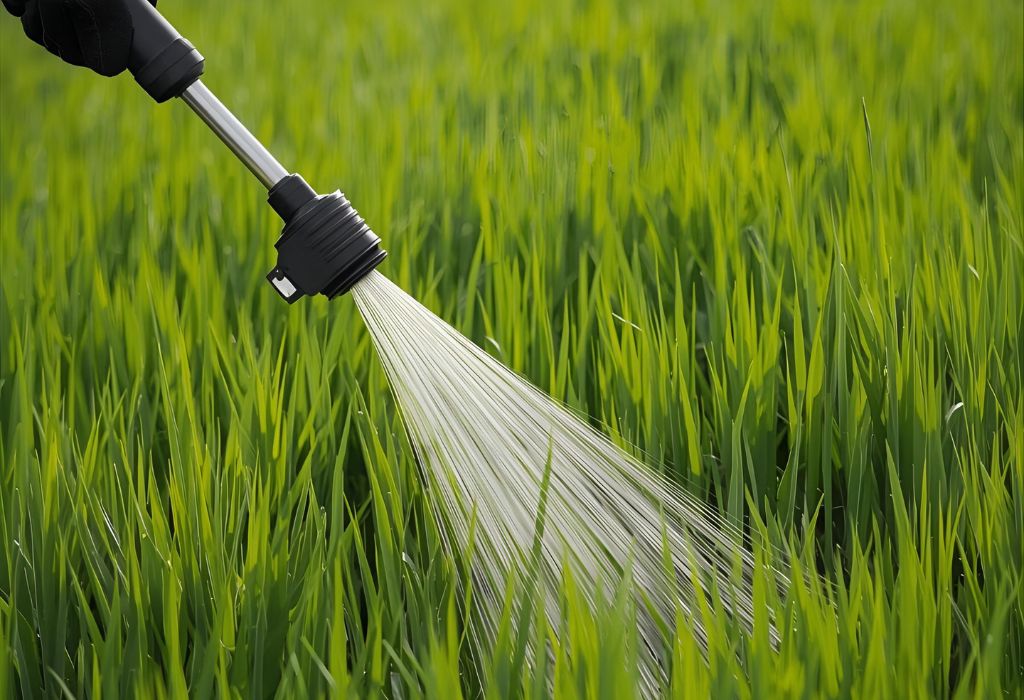A flower garden can quickly lose its charm when weeds begin stealing water, nutrients, and sunlight. These invaders not only spoil the beauty but also weaken the soil and crowd out delicate blooms.
The question many gardeners ask is simple yet tricky: can I use weed killer in my flower garden without harming my flowers? The curiosity lies in whether herbicides can control weeds effectively while keeping blossoms safe.
Chemical herbicides are widely used, with the EPA reporting that over 85 million pounds of glyphosate are applied every year in the U.S. (EPA). While powerful, these products can damage nearby plants if applied carelessly. Drift, soil contamination, and pet safety are all real concerns.
On the other hand, preventive methods like mulching can be surprisingly effective. Research shows mulch reduces weed germination by nearly 70% when layered correctly (NCBI). This proves that safe, sustainable alternatives exist alongside herbicides.
The real benefit for gardeners comes from knowing when to use selective herbicides, when to rely on natural remedies like vinegar sprays, and when to stop weeds before they sprout. Each approach offers unique advantages but also requires caution.
What Does Weed Killer Mean for Flower Gardens?

Weed killer is a broad term that covers both selective and non-selective herbicides. Selective products are designed to target weeds while leaving flowers intact, while non-selective options can destroy anything they touch.
In flower gardens, the difference between these two categories is critical. Using the wrong product can quickly damage delicate blooms and reduce the garden’s overall health.
Common ingredients like glyphosate, found in many household products, are highly effective but risky near flower beds. Even a small amount of spray drift can injure petals, leaves, and soil organisms that support growth.
Safer approaches include spot treatment, which applies weed killer directly onto unwanted plants. This method reduces the risk of harming surrounding flowers and is often recommended for small, targeted infestations.
Weed killer in a flower garden should never be a one-size-fits-all solution. The choice between chemical, organic, or preventive methods depends on the specific types of weeds, the soil condition, and the gardener’s long-term goals.
Risks of Using Weed Killer in a Flower Garden

Applying weed killer in a flower garden always carries potential risks. Herbicide drift, soil contamination, and damage to non-target plants are among the most common problems.
When droplets or mist move beyond the intended area, delicate flowers can suffer leaf burn or stunted growth. This issue is especially likely on windy days or with non-selective products.
Another concern is the impact on soil biodiversity. Chemical herbicides can disrupt beneficial microorganisms and reduce pollinator activity, both of which are vital for healthy blooms.
Environmental safety must also be considered. Many herbicides contain ingredients that may harm pets, children, or nearby wildlife if exposure occurs.
Timing adds another layer of risk, as applying weed killer during peak flowering can weaken blossoms. Improper usage may leave long-term effects that reduce the vibrancy and resilience of the garden.
Safe and Effective Weed Control Methods

The best results in a flower garden often come from combining multiple weed control strategies. Selective herbicides, organic remedies, and physical barriers can all play a role in maintaining a healthy balance.
Selective herbicides target specific weeds without harming most flowers. These are often labeled for broadleaf control, making them safer when used carefully around ornamentals.
Organic weed killers, such as vinegar-based sprays or essential oil solutions, are effective on young weeds. They provide a chemical-free option for gardeners concerned about pets, soil health, and environmental impact.
Mulching is another highly effective method. By blocking sunlight, mulch prevents weed seeds from germinating while helping the soil retain moisture for flower roots.
Spot treatment allows precise application of weed killer directly onto problem areas. Using shields, applicator wands, or even paintbrushes reduces the risk of contact with nearby blooms.
Safe weed control requires consistency, not just a one-time application. Regular monitoring and timely interventions help ensure weeds never gain the upper hand in a flower garden.
Preventive Strategies Before Using Any Weed Killer
The most effective way to protect a flower garden is to stop weeds before they appear. Preventive strategies not only reduce maintenance but also create healthier growing conditions for flowers.
Mulching is one of the simplest and most reliable methods. A thick layer of organic mulch blocks sunlight, preventing weed seeds from sprouting while enriching the soil.
Landscape fabric or weed barriers provide another layer of defense. When placed beneath mulch, these materials act as a shield that keeps most weeds from breaking through.
Hand-pulling remains a valuable strategy, especially for small infestations. Removing weeds at the root before they set seed helps reduce future growth in flower beds.
Pre-emergent herbicides can also be used with caution. These products target weeds before they germinate, but they must be applied at the right time of year to be effective without harming flowers.
Consistent garden care is the foundation of prevention. Weekly inspections and routine maintenance keep small problems from turning into large-scale invasions.
Step-by-Step Guide to Using Weed Killer Safely

Applying weed killer in a flower garden requires careful preparation. The goal is to eliminate weeds without harming the surrounding blooms or soil health.
The first step is to correctly identify the type of weed problem. Annual weeds, perennial weeds, and invasive grasses may each require different approaches.
Next, choose the right product based on the garden’s needs. Selective herbicides are best for broadleaf weeds, while organic options suit gardeners seeking natural solutions.
Before application, create barriers to protect flowers. Cardboard, plastic shields, or applicator wands can help direct the spray only onto the weeds.
Timing is just as important as the method used. Calm mornings or evenings reduce drift, while cooler temperatures improve absorption and effectiveness.
After spraying, wait the recommended period before planting new flowers. This ensures that any chemical residue does not interfere with root development or soil biodiversity.
Consistent monitoring after treatment helps track progress. If weeds return, spot treatment or manual removal can address new growth before it spreads.
Alternatives to Chemical Weed Killers
Not every gardener wants to rely on chemicals for weed control. Safer alternatives exist that protect both flowers and the environment.
Boiling water is one of the simplest methods. Poured directly on weeds, it destroys roots instantly but must be applied carefully to avoid nearby blooms.
Vinegar and baking soda are also popular natural weed killers. These work best on young weeds but can affect soil if used excessively.
Mulching continues to be a reliable organic solution. It blocks light, maintains soil moisture, and reduces weed germination over time.
Landscape barriers like cardboard or fabric provide long-term control. When paired with mulch, they offer protection without exposing flowers to chemicals.
Pet-safe commercial sprays are now widely available. Many of these use essential oils or natural acids that control weeds without toxic residues.
Alternatives may require more frequent application than herbicides. However, they support healthier soil, safer environments, and a more sustainable flower garden.
Conclusion
The question can I use weed killer in my flower garden does not have a single answer. The safest approach depends on the type of weeds, the health of the soil, and the sensitivity of surrounding blooms.
Selective herbicides, organic sprays, and spot treatments can be effective when applied carefully. Preventive methods like mulching, barriers, and routine maintenance remain the most reliable long-term solutions.
Chemical products offer quick results but must be handled with caution. Natural alternatives and preventive care protect flowers while supporting soil biodiversity and environmental safety.
The best strategy is often a balanced one. Choosing the right method for your garden ensures vibrant flowers, controlled weeds, and a healthier space for both plants and people.
I’m Maya L. Greenwood, a lifelong plant lover who believes anyone can grow something beautiful with the right guidance. After years of testing soil mixes, pruning methods, irrigation tricks, and pest-safe solutions, I started EasyGardenTips.com to turn hard-won lessons into step-by-step advice. From seed starting and container gardens to composting and seasonal checklists, my goal is to make gardening simple, sustainable, and fun.
